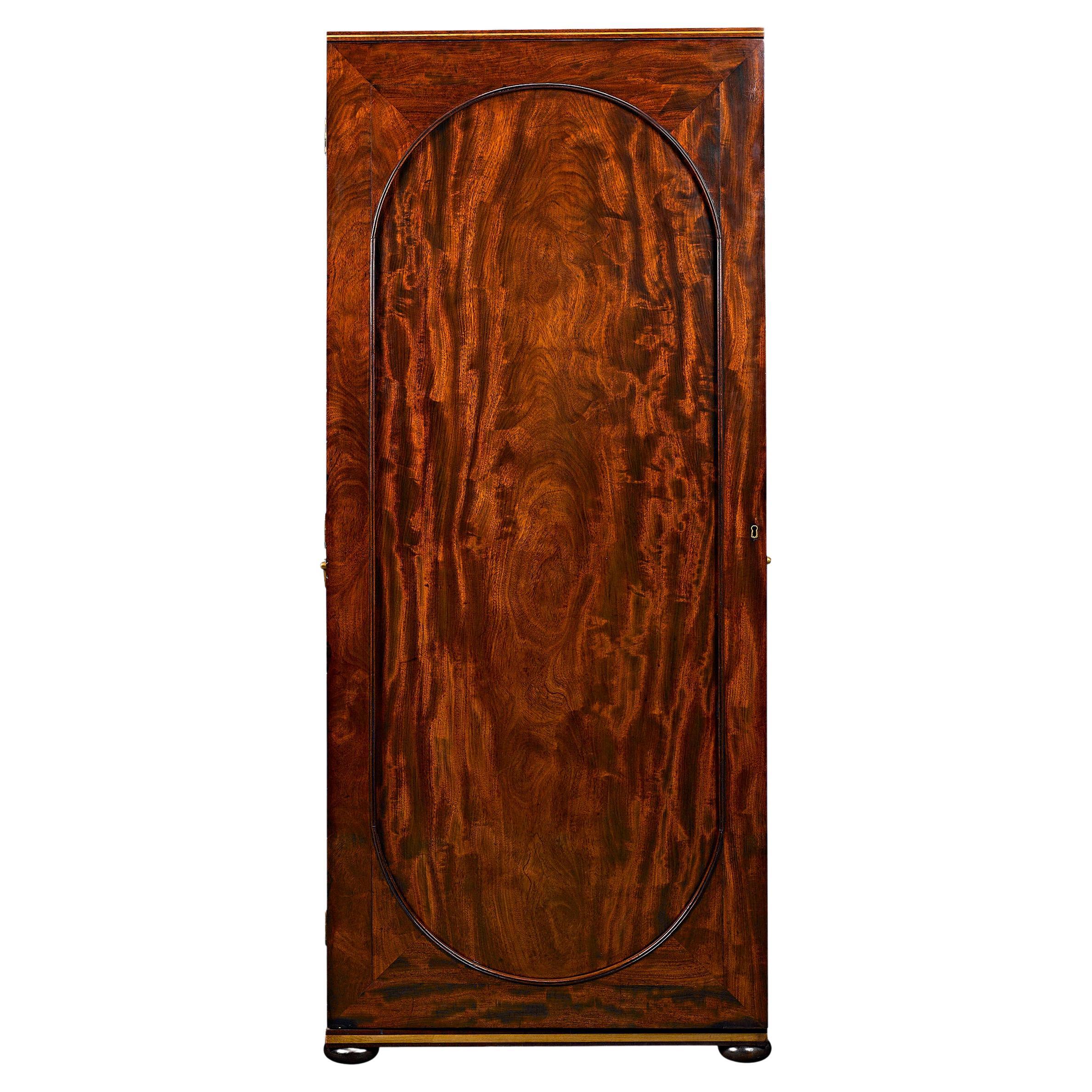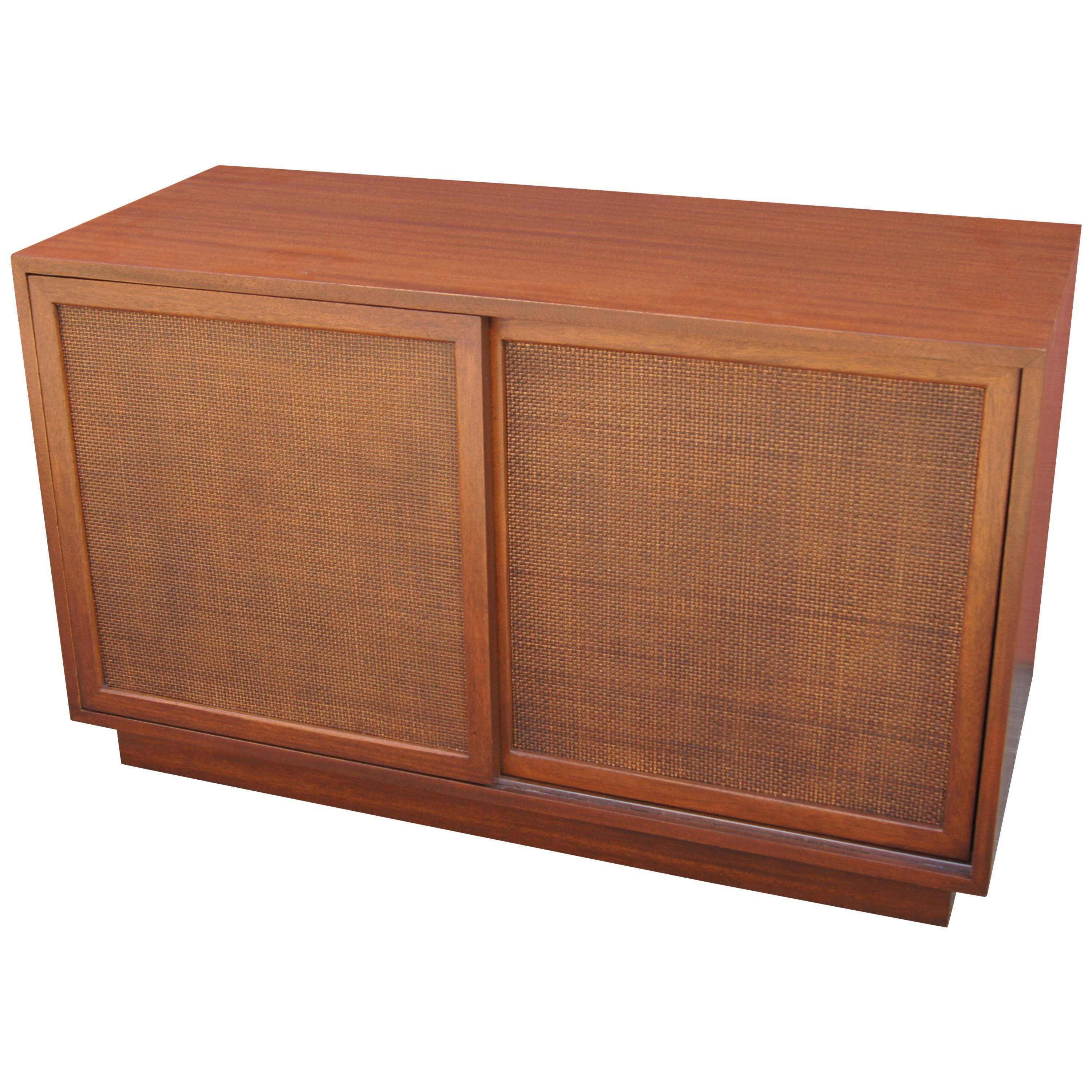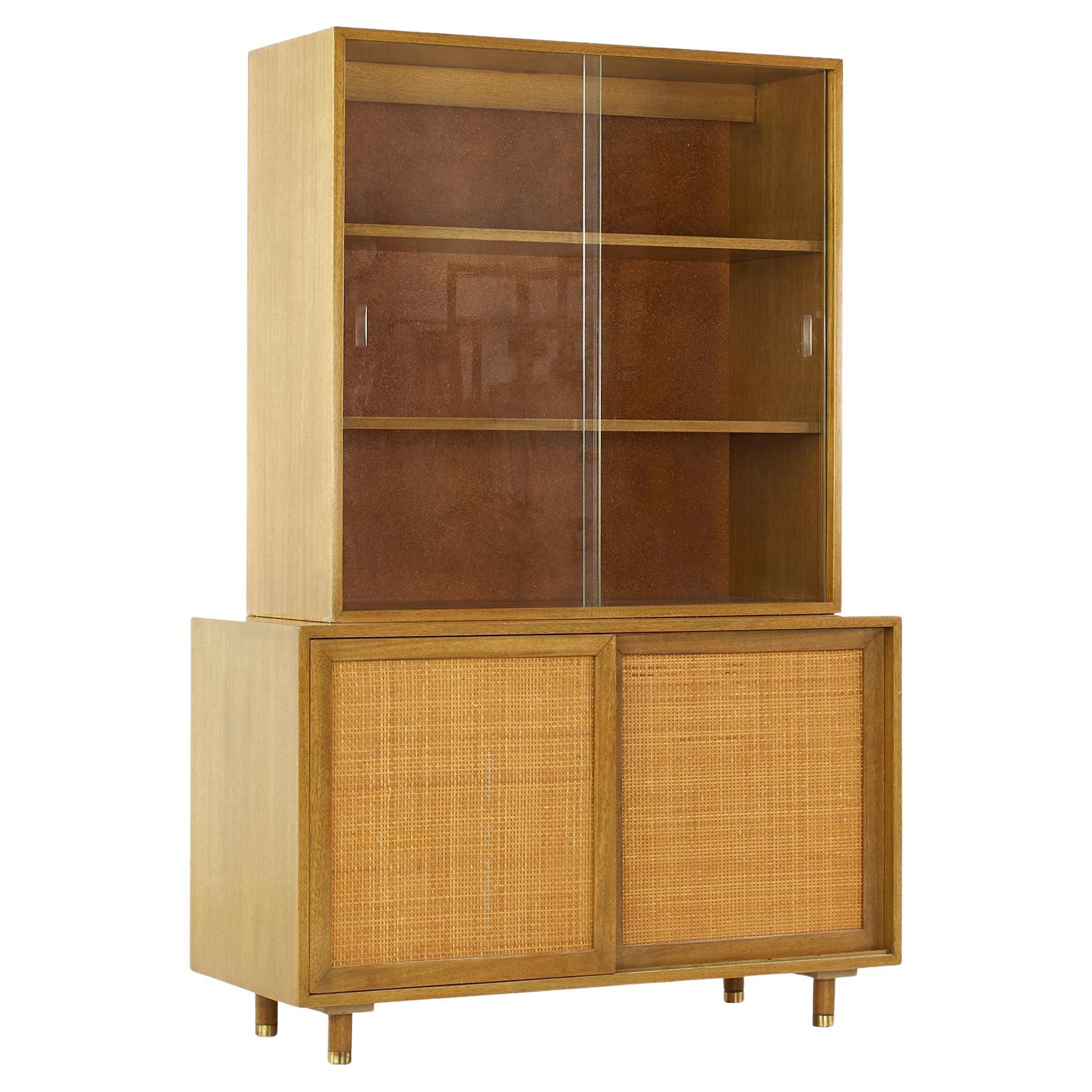Items Similar to Mahogany Upright Cane Cabinet
Want more images or videos?
Request additional images or videos from the seller
1 of 5
Mahogany Upright Cane Cabinet
About the Item
Classical style and impeccable design distinguish this English upright cane cabinet. Crafted of lustrous Cuban mahogany, this case is comprised of a beautifully paneled door which opens to reveal a three-tiered cane rack that holds 30 walking sticks. The mirrored back is perfect for display and identification, and the door, when opened wider, pulls the rack forward slightly, so that all of one's prized stick are within easy reach. Set upon bun feet and accented with brass bands, this cabinet is a must for the serious collector.
Circa 1880
27 7/8 wide x 10 3/4” deep x 65 3/4” high
- Dimensions:Height: 65.75 in (167.01 cm)Width: 27.88 in (70.82 cm)Depth: 10.75 in (27.31 cm)
- Materials and Techniques:
- Place of Origin:
- Period:
- Date of Manufacture:Circa 1880
- Condition:
- Seller Location:New Orleans, LA
- Reference Number:
About the Seller
5.0
Recognized Seller
These prestigious sellers are industry leaders and represent the highest echelon for item quality and design.
Established in 1912
1stDibs seller since 2010
93 sales on 1stDibs
Typical response time: 7 hours
- ShippingRetrieving quote...Ships From: New Orleans, LA
- Return PolicyThis item cannot be returned.
More From This SellerView All
- English Upright Cane CabinetLocated in New Orleans, LAThis English cane cabinet exhibits classical style and impeccable design. Crafted of lustrous Cuban mahogany, this upright case features a beautifully paneled door which opens to rev...Category
Antique 19th Century English Cabinets
MaterialsBrass
- Mahogany Bureau Cabinet After Thomas ChippendaleBy Thomas ChippendaleLocated in New Orleans, LAThis extraordinary Irish bureau cabinet was crafted based on a design for a desk and bookcase drawn from Thomas Chippendale’s famed 1762 edition of The Gentleman and Cabinet-Maker's ...Category
Antique 18th Century Irish Chippendale Cabinets
MaterialsMirror, Mahogany
- King George I Ambassadorial Secrétaire-CabinetLocated in New Orleans, LAThis highly important secrétaire-cabinet was crafted for and specially ordered by King George I for the British Ambassador to Russia. From its craftsmanship and materials to its exceptional artistry, it is a work of royal and historic significance that exudes power in each and every detail. The broken pediment at its apex features the simplified royal coat of arms bearing the king’s crown, while the interior is adorned by portraits of the British Royal Family. Placed within the ambassador’s St. Petersburg home, this entirely unique piece of furniture would have been a potent reminder of England's grandeur and political importance. Relations between England and Russia during this period were at an all-time high. Peter the Great had traveled to England in 1698 as part of his widely known “Grand Embassy” tour, wherein he attempted to gain foreign support against the Ottoman Empire. He spent a period of nearly four months there, meeting with King William III and his court on numerous occasions. Noted academic Arthur MacGregor wrote concerning the impact of the trip, “For two decades following Peter's visit, British influence in Russia reached a peak. It manifested itself in social custom, in craft practice and in ships and naval organization... it reached a significant sector of the population before relations cooled once again and the two nations pulled back from this era of unprecedented cordiality.” First and foremost, however, it is a reminder of British might and influence. By the reign of King George I, England had come into its own as a world power. Unique in its design, this cabinet is a reflection of the country’s might. It is crafted from the highest-quality solid walnut and burr walnut adorned by gilded lock plates and engraved hinges. The presence of ormolu at its apex and lining the doors was a rarity for this period, and its addition makes manifest the importance of the design. The outer doors open to reveal multiple interiors, including fifteen separate drawers around a central cupboard; the cupboard doors each bear mezzotint portraits of George I and his father, Ernest Augustus, Elector of Hanover. An etching after the portrait of George I dating to circa 1716 is in London’s Royal Academy. A second, inner pair of doors are adorned by mezzotints of the Prince and Princess of Wales (later Queen Caroline and George II), which are both after portraits by Sir Godfrey Kneller dated 1716 in the Royal Collection. A final portrait is revealed on the very interior of the cabinet, where a mezzotint of Frederick, Anne, Amelia and Caroline, children of the Prince of Wales, resides. An etching (circa 1715-1720) after this portrait can be found in the National Portrait Gallery (London). Apart from its abundance of royal portraiture, the cabinet features stunning painted decoration, including floral designs as well as clouds, birds and trees in a bucolic motif reminiscent of Eden. Its lower portion is a study in both form and function, featuring a fitted secrétaire-drawer above three additional drawers for storage. The cabinet appears in The Shorter Dictionary of English Furniture by R. Edwards from 1964, a text that is regarded as the bible of British furniture design. Edwards describes it as a “writing cabinet...given by George I to the British Ambassador at the Russian court.” The cabinet was likely made for the 18th-century German diplomat and writer Friedrich Christian Weber, who represented English interests at the Russian court from 1714 until 1719. Although Weber’s tenure as ambassador was relatively short, while in St. Petersburg, he authored his account entitled Das veraenderte Russland (The Present State of Russia), which was published in three volumes in 1721, 1739 and 1740. It may, however, also have been made for George Douglas, 2nd Earl of Dumbarton, who served as ambassador alongside Weber in 1716. Diplomatic relations ceased between the two countries in 1721. In 1928, the cabinet appeared for sale at the International Exhibition of Antiques & Works of Art in Olympia. It had previously been in the collection of the Woltner family of Bordeaux, the celebrated vintners who owned the estate Château Laville Haut-Brion and produced wine of the same name. According to the family, Monsieur Woltner was given the cabinet as a gift from an aunt who lived in Russia for many years. After leaving the Woltner collection, the cabinet was acquired by William Berry...Category
Antique 18th Century English Georgian Secretaires
MaterialsBrass
- 19th Century Watch Winding Display CabinetLocated in New Orleans, LAThis incredible, one-of-a-kind watch display cabinet brings together the beauty of an antique with the functionality of modern technology. Crafted of mahogany, this 19th century jewelry display cabinet...Category
Antique 19th Century Unknown Empire Cabinets
MaterialsMahogany
- Regina Upright Music BoxBy Regina CompanyLocated in New Orleans, LAAn extraordinary and rare coin-operated Regina Sublima upright music box crafted by the Regina music box company, one of the most recognized music bo...Category
Antique 19th Century American Other Musical Instruments
MaterialsOak
- The Mills Chicago Upright Slot MachineBy Mills Novelty CompanyLocated in New Orleans, LAThis impressive Chicago upright coin-operated slot machine was built by the leader of the slot machine movement in Chicago and around the world, the Mills Novelty Company. Manufactur...Category
20th Century American Games
MaterialsNickel
You May Also Like
- Small Mahogany Cabinet with Cane Doors by Harvey ProbberBy Harvey ProbberLocated in Dorchester, MADesigned by Harvey Probber, this small midcentury cabinet features a mahogany case on a plinth base. Cane-front sliding doors conceal, on the left, three deep drawers with white lacq...Category
Vintage 1950s American Mid-Century Modern Dressers
MaterialsCane, Mahogany, Lacquer
- Harvey Probber Mid Century Mahogany and Cane China CabinetBy Harvey ProbberLocated in Countryside, ILHarvey Probber mid century mahogany and cane china cabinet The china cabinet bottom measures: 42 wide x 18 deep x 26.5 inches high The china cabinet top...Category
Vintage 1970s American Mid-Century Modern Buffets
MaterialsCane, Glass, Mahogany
- CraftAssociates Cabinet, Peabody Three Door Cane Front Cabinet, CaneLocated in Oak Harbor, OHCraftAssociates Cabinet, Peabody Three Door Cane Front Cabinet, Cane This Lawrence Peabody modern three door cane front cabinet for Craft Associates Furniture is expertly hand craft...Category
2010s American Modern Cabinets
MaterialsCane, Wood, Oak
- Harvey Probber MCM Bleached Mahogany Cane Front Sliding Door Bar Media CabinetBy Harvey ProbberLocated in Countryside, ILHarvey Probber Mid Century bleached mahogany and cane front sliding door bar media cabinet. This bar cabinet measures: 42 wide x 18 deep x 33 inches high All pieces of furnitur...Category
Vintage 1970s American Mid-Century Modern Cabinets
MaterialsCane, Mahogany
- Drexel Declaration Walnut and Cane CabinetBy Drexel, Kipp Stewart & Stewart MacDougallLocated in Denton, TXDrexel declaration walnut & cane cabinet designed by Stewart MacDougall and Kipp Stewart. Iconic design with walnut and cane- which is very r...Category
Mid-20th Century American Mid-Century Modern Cabinets
MaterialsCane, Walnut
- English Mahogany CabinetLocated in Wilson, NCThis mahogany cabinet has louvered panels on the front and sides of the top section. The door of the top section has a bookmatched rosewood center panel framed with shaped molding. The top has a broken arch top with turned rosettes at the top and center. The top and bottom sections have fluted pilasters. There are carved concentric circle panels...Category
Antique 1870s English Cabinets
MaterialsMahogany, Rosewood
Recently Viewed
View AllMore Ways To Browse
Antique Wedgewood Plaque
Pantry Light
Glass Plinth
Meuble Louis 16
Jewelry Display Cabinet Lock
Hard Case
Art Deco Wood Door
Blossom Cabinet
Vintage Wood Thread Spools
Retro Industrial Multi Drawer Cabinet
Reeded White Washed Cabinet
Retro Library Card Cabinet
Vintage Library Card Cabinet
Blue Silver Asian Cabinet
Glass Tansu
Index Card File Cabinet
Index Card File
Vintage Library Card Drawers





